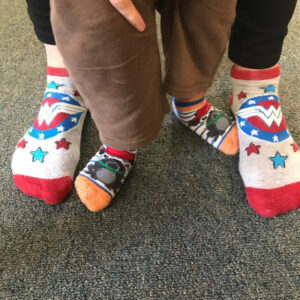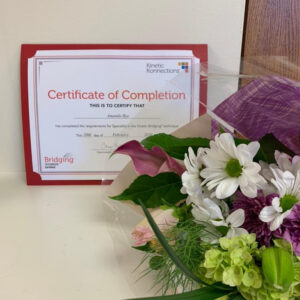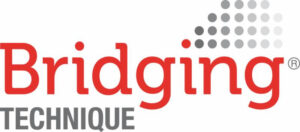It’s Been a Peanutty Year — Celebrating 18! ????
Eighteen years on this journey
Reflections …
I could never have imagined where this journey helping people overcome their movement and developmental challenges would take me. Such a long way from my earlier career in engineering and power systems! Surprisingly, there are so many similarities. The power system principles and physics are my go-to when I need to think through some unusual movement relationships.
At Kinetic Konnections we are always learning and understanding more about the physics of the body. These learnings are reflected in the evolution of the Bridging Technique. Over the years there have been distinctive phases of insight, and this past year was yet another.
The newest insight revolves around peanut balls (pictured), which have fast become a tool of choice. Interestingly, the peanut balls support some basic aspects of physics really well. We find they make it easier to quickly reintegrate your movement foundation, allowing for better outcomes. And they are fun!
So many stories of wonderful outcomes to share — the challenge is which one! Last August began an initiative to expand communications by sharing stories weekly. It’s truly been a joy to write each story and be reminded of all the families’ lives who have been positively changed. Thank you to all who have been willing to share your story.
Appreciating each and every one of you who has trusted in the unseen world of physics to help you move better and feel better.
 625 of you visited us at Kinetic Konnections last year!
625 of you visited us at Kinetic Konnections last year!
One thing the team at Kinetic Konnections is proud of is the many people who trusted us to help them. In some cases, you were skeptical and pleasantly surprised when your pain disappeared, or a child matured, almost overnight.
In 2019 we helped 625 unique individuals. They ranged in age from 7-days-old to 91.
The primary reasons people seek our help are:
- Unresolved Pain: Whether from an injury, post-medical procedures, or head injuries.
- Anxiety and Behavior: The ability to self-calm and self-regulate are supported by our micro-movement framework.
- Developmental Gaps: Children with unusual birth characteristics, or early life medical procedures are missing essential aspects of developmental complexity. We rebuild them from the bottom up.
 The Bridging professional community grows
The Bridging professional community grows
In 2017 Dina Hanbury and Amanda Bye took a workshop out of curiosity, which led them down a path ending in their 2019 completion of the Bridging Specialist certification.
If you are a professional who wants to help your clients more effectively, watch for Bridging education options later this year.
 For those who want to learn more about Bridging, you can look forward to this later in the year
For those who want to learn more about Bridging, you can look forward to this later in the year
- An enhanced online learning platform using the latest in adult learning principles.
- A four month mixed mode of learning — online and in-person — to attain the status of Bridging Trained.
- A six month accelerated mixed mode program of online and in-person learning to earn the Bridging Specialist Certification.
Wondering if Bridging® can help?
When there is pain, anxiety, behavior challenges, or developmental gaps the Bridging Technique offers a new perspective to getting positive change. This new perspective provides insight to the reason the issue is unresolved or not improving. More importantly, the Bridging framework allows us to get to the base issue and put your body’s movement back together in a better, more efficient way.
Following the Bridging process, we assess relationships between head, limbs, and core to make sure there is symmetry and integration of the movement supporting:
- self-regulation
- core strength and control
- correct movement transitions and flows
- integrated visual-motor skills
Often in two or three sessions, our use of the Bridging Technique’s gentle rocking movements restores movement symmetry and integration. You, or your child, are calmer, more coordinated and can focus better.
Depending upon the age of the injury and other complicating factors, we may recommend periodic follow-ups to support transitional stress associated with growing.
Friends or family struggling with pain, anxiety, or a child with developmental gaps?
Please pass this along. Your understanding and insight may be just what they needed today.

